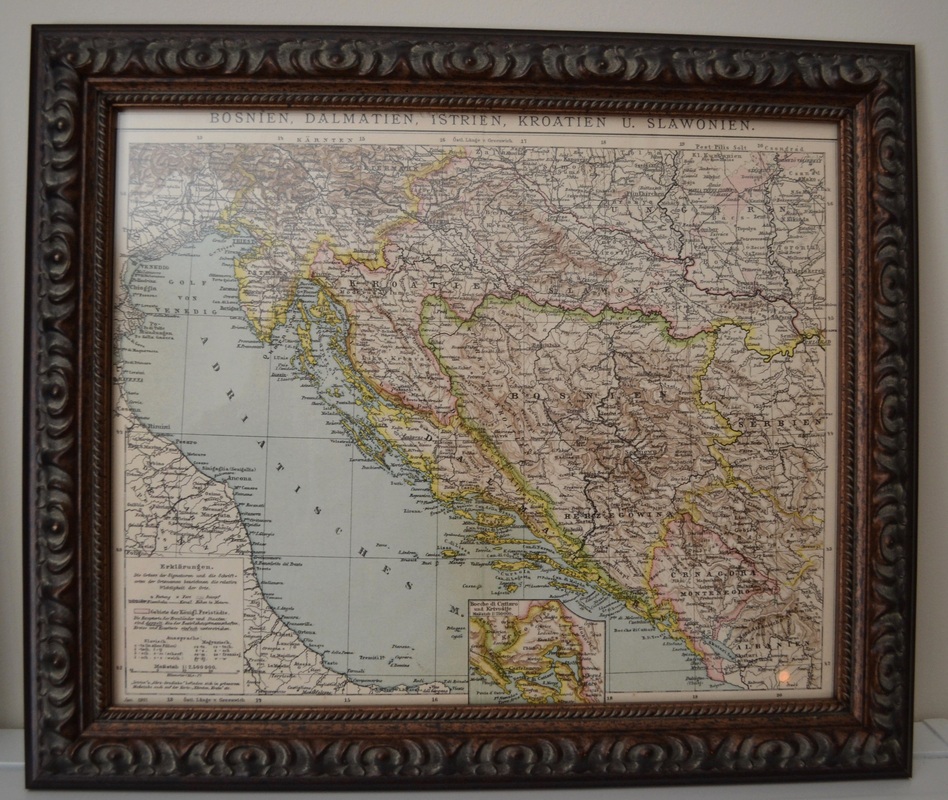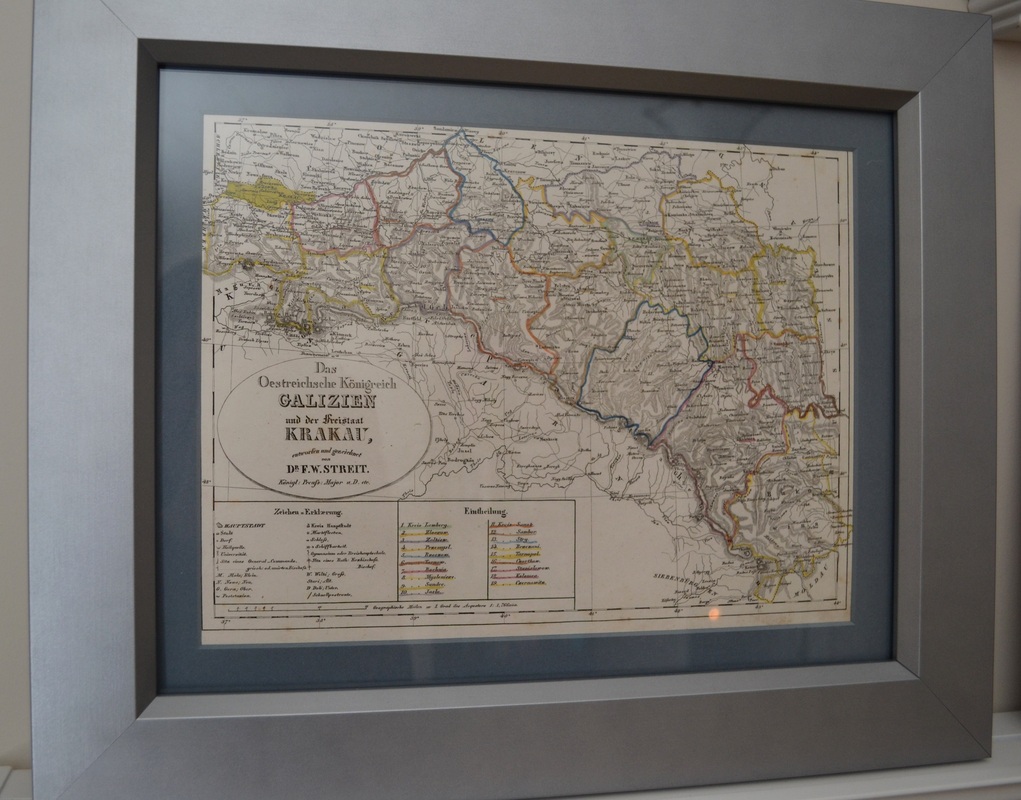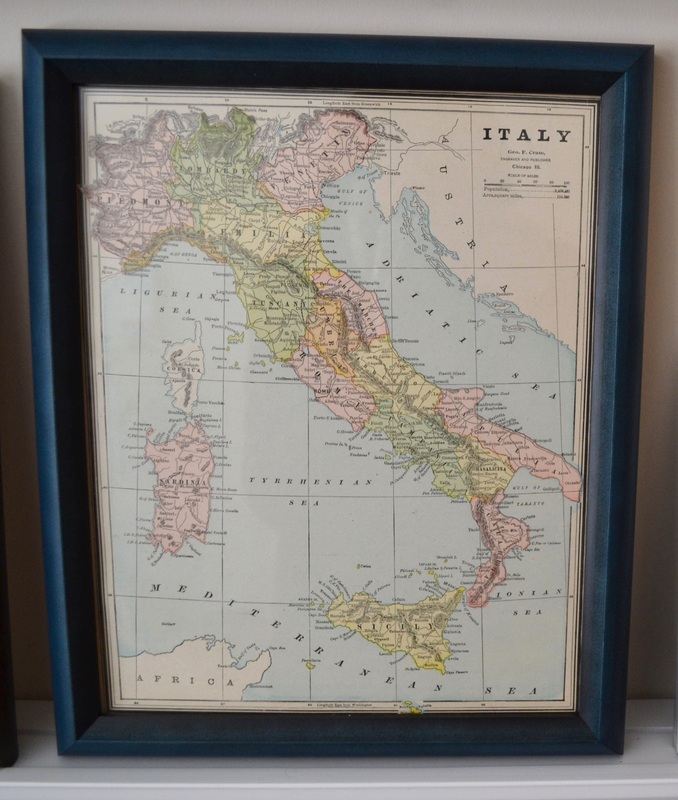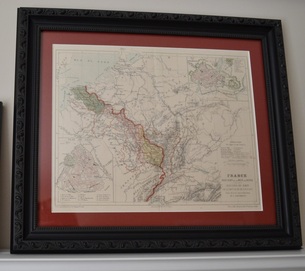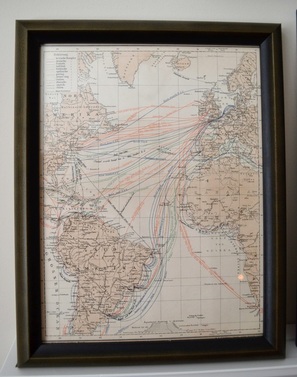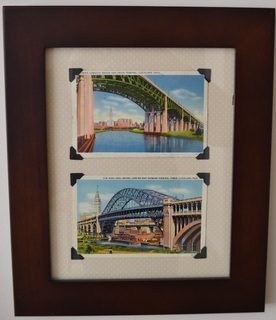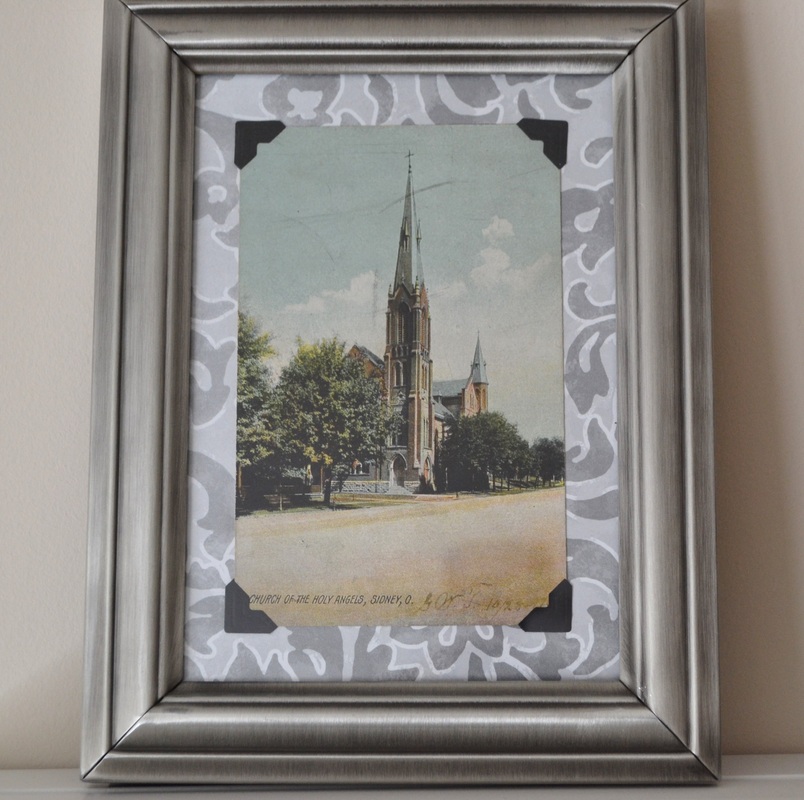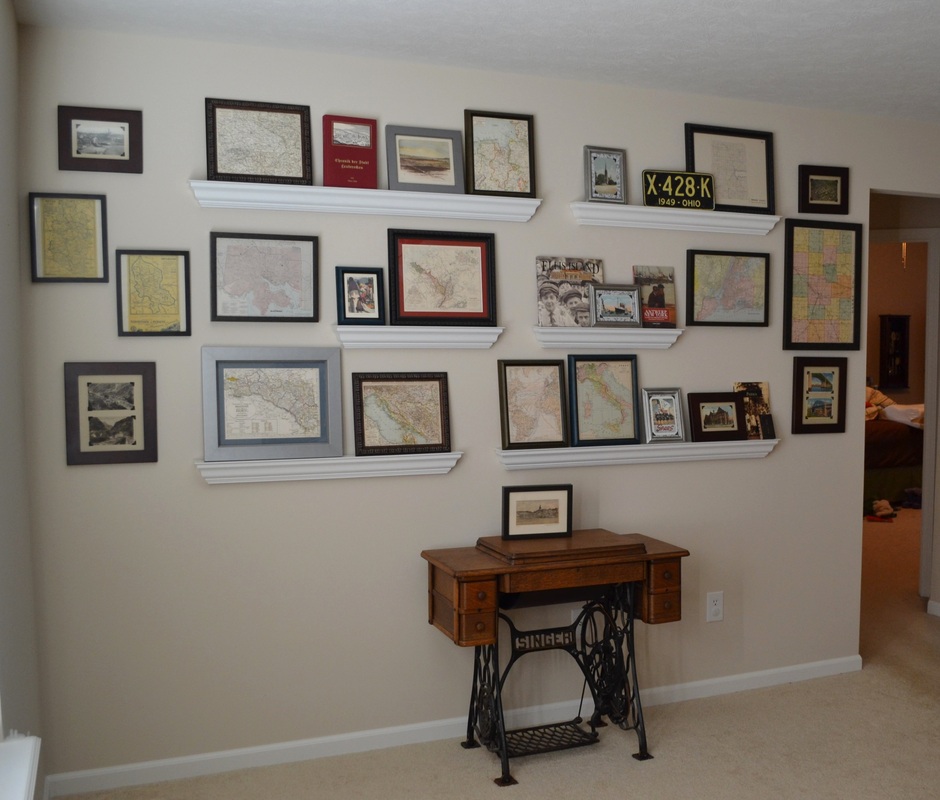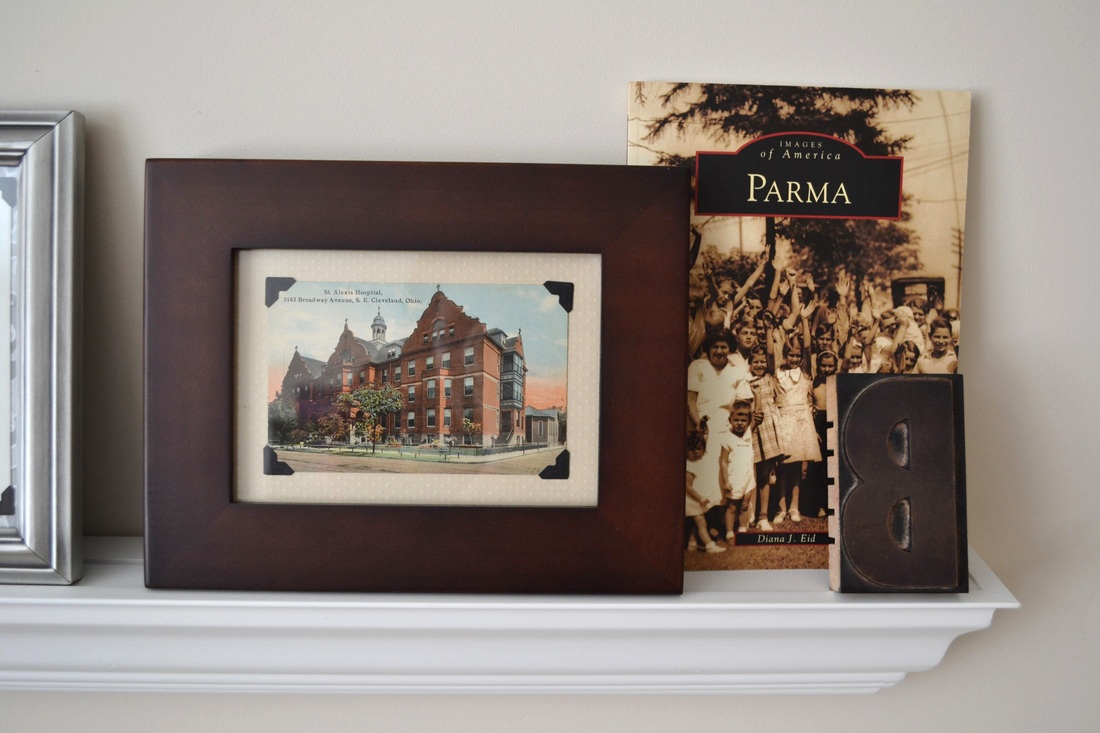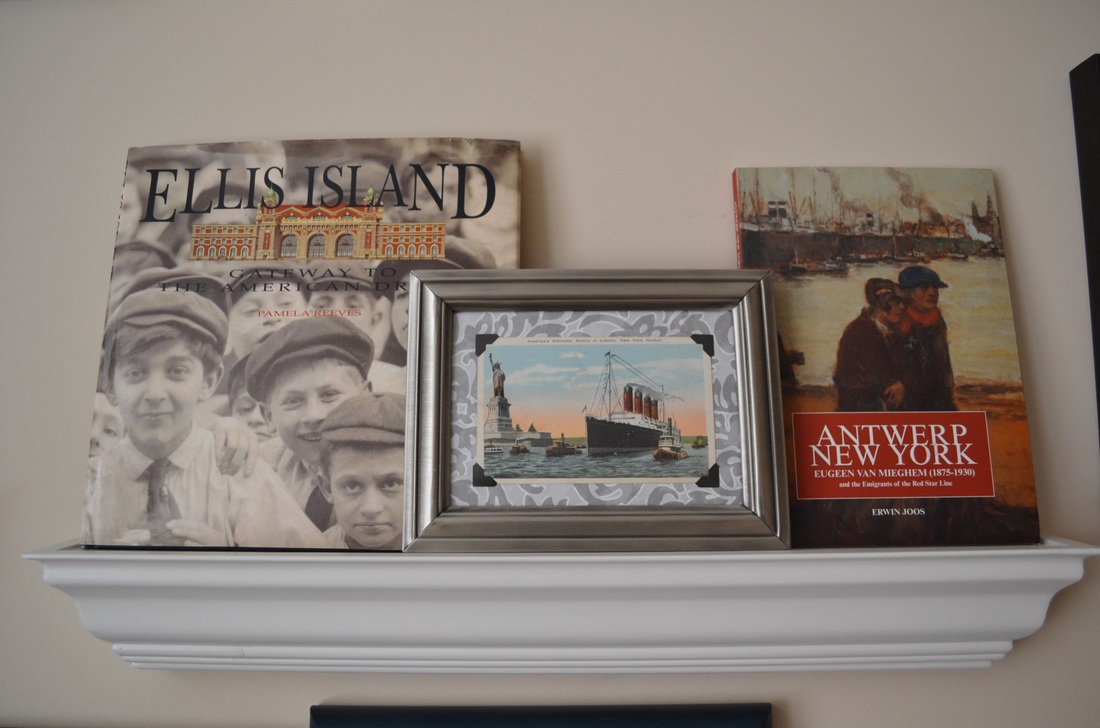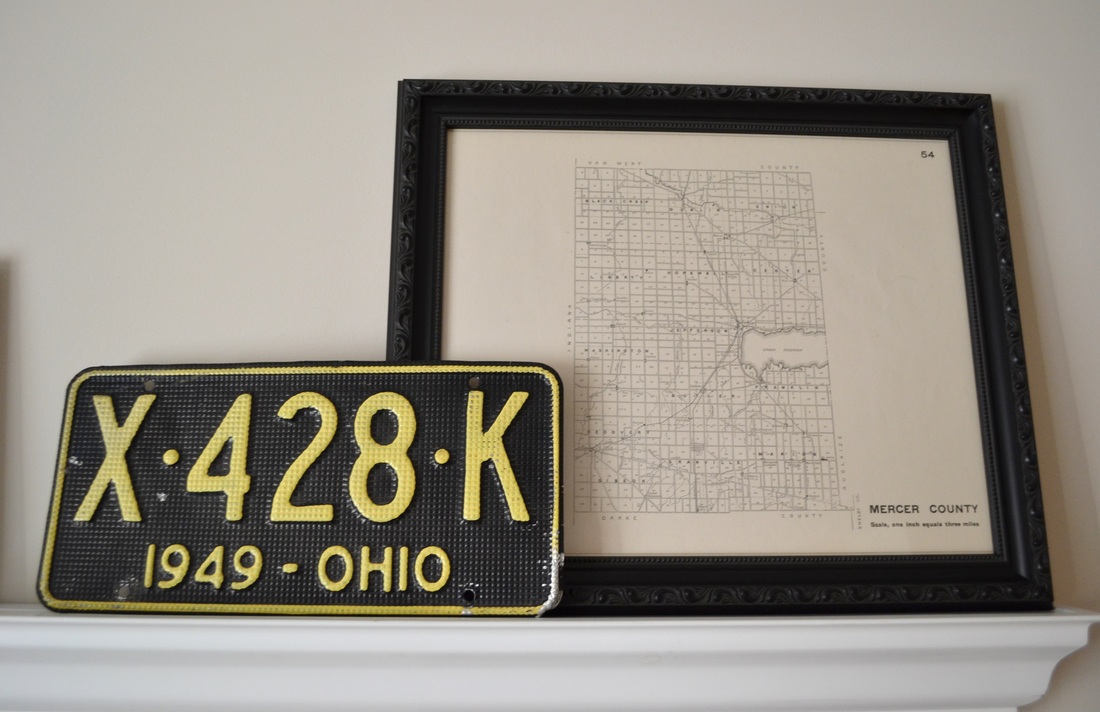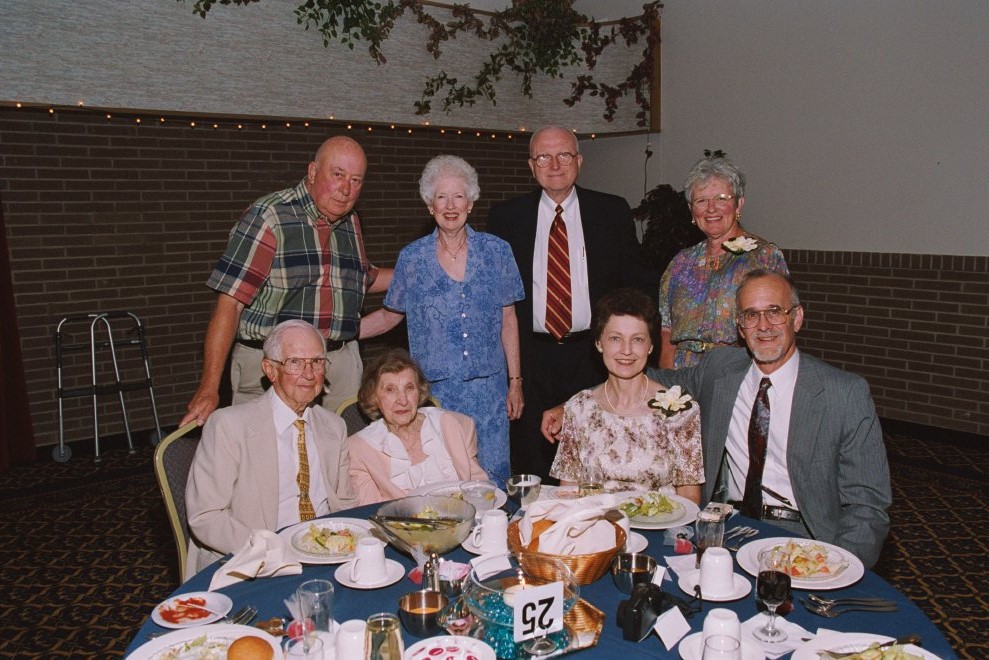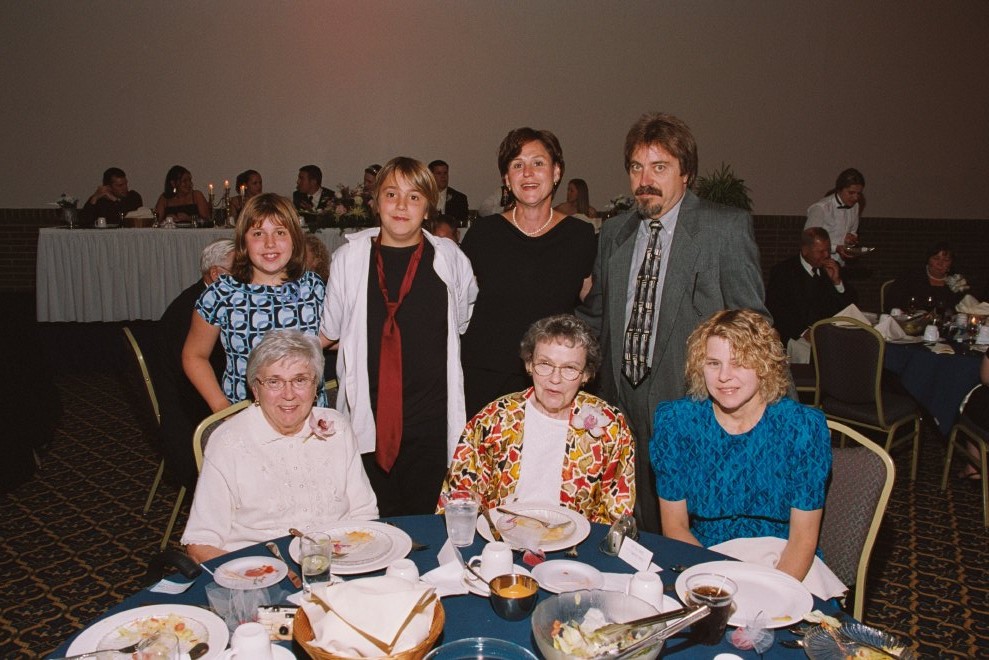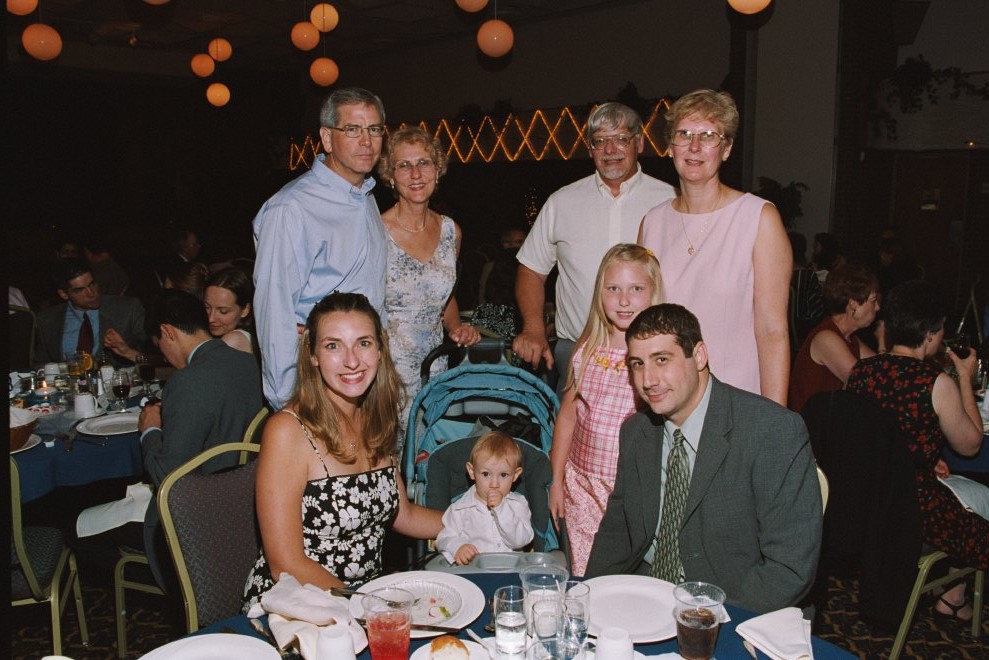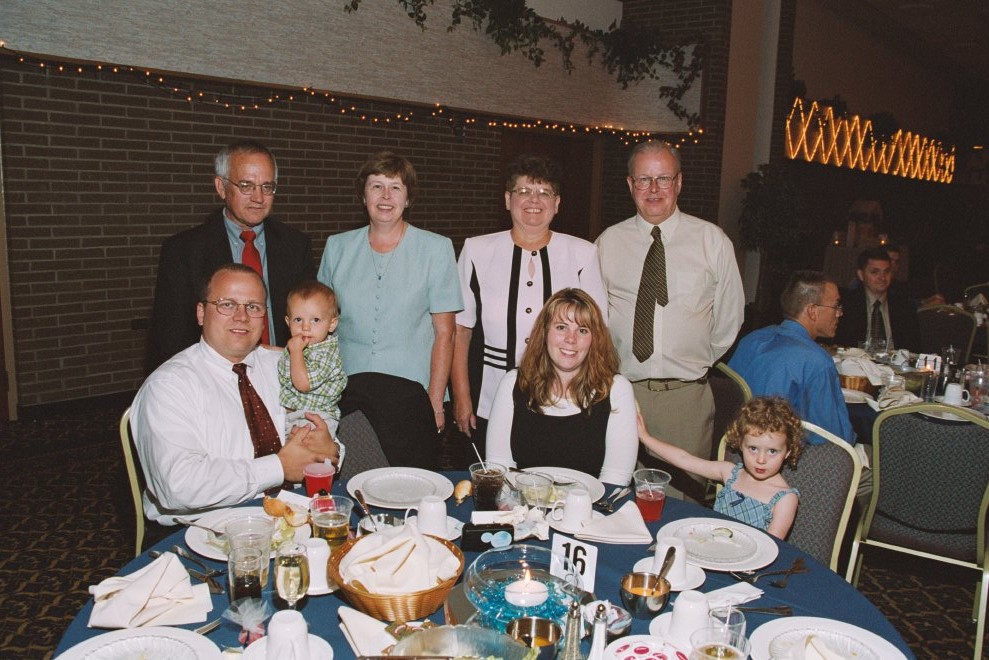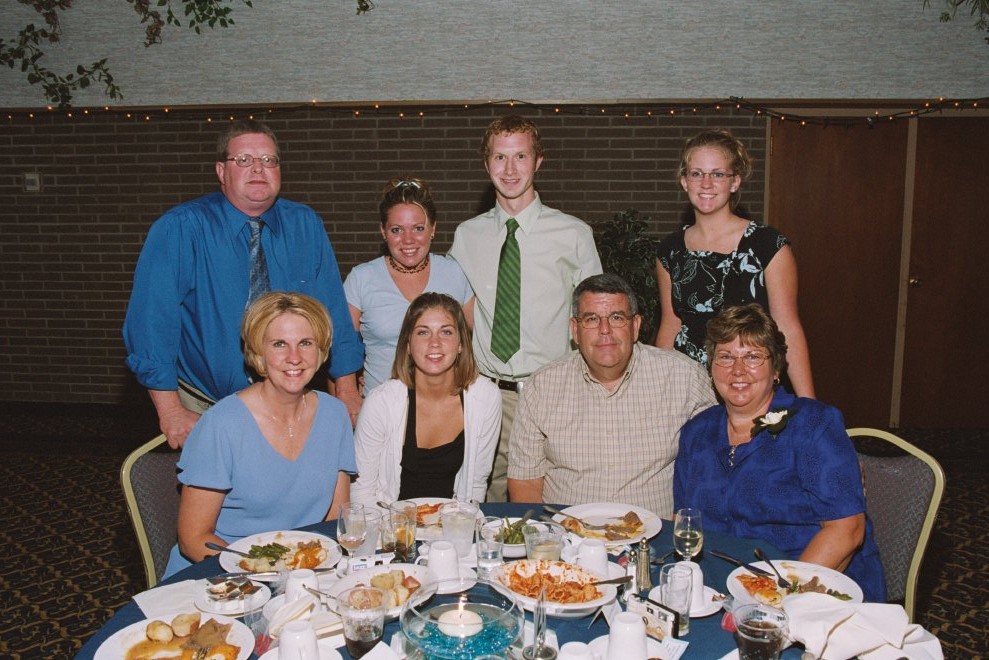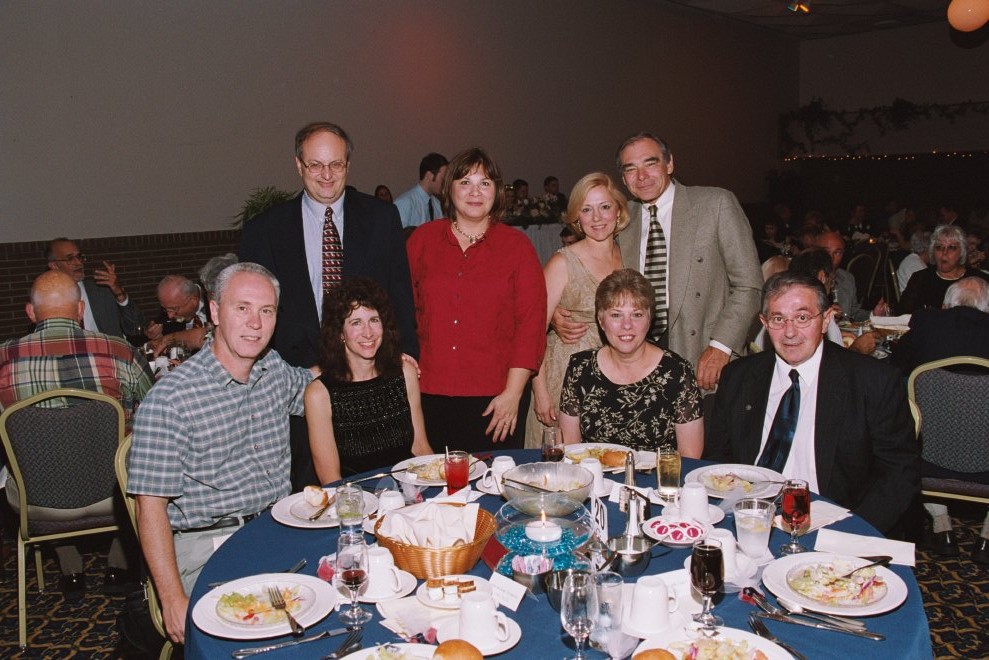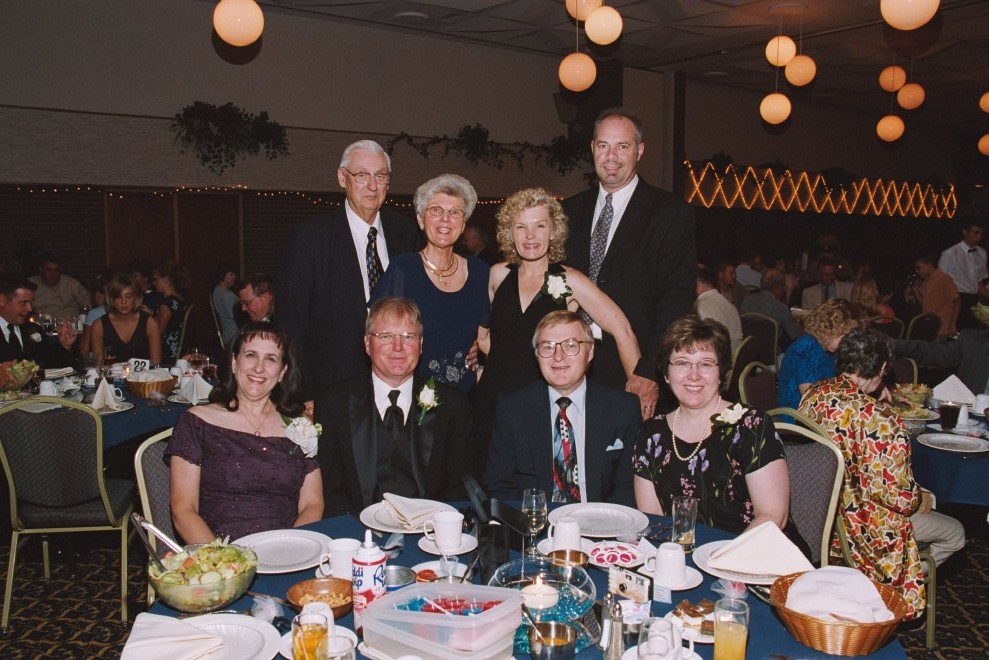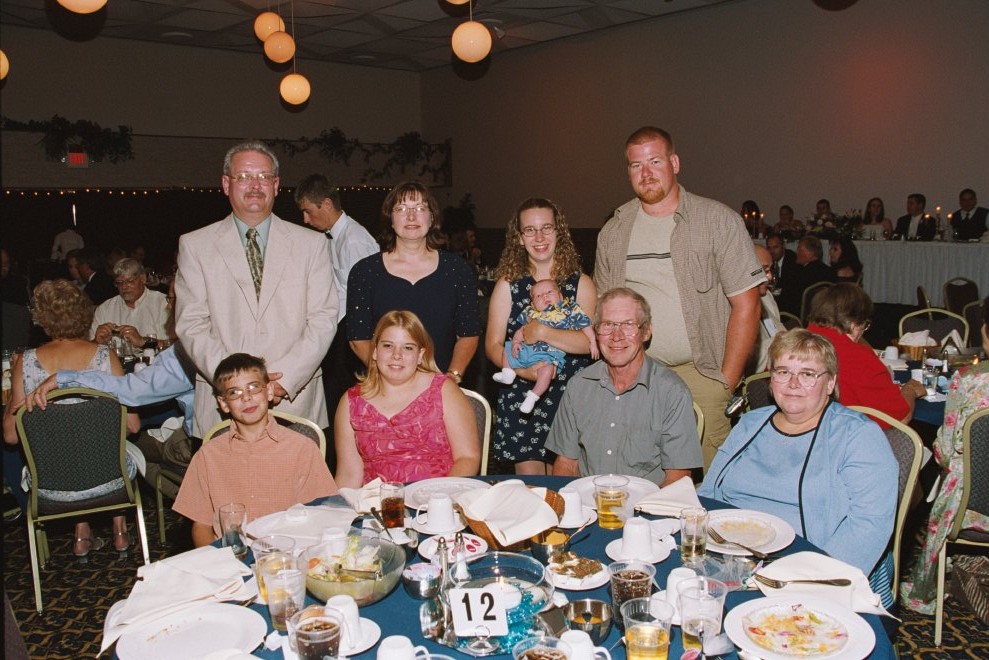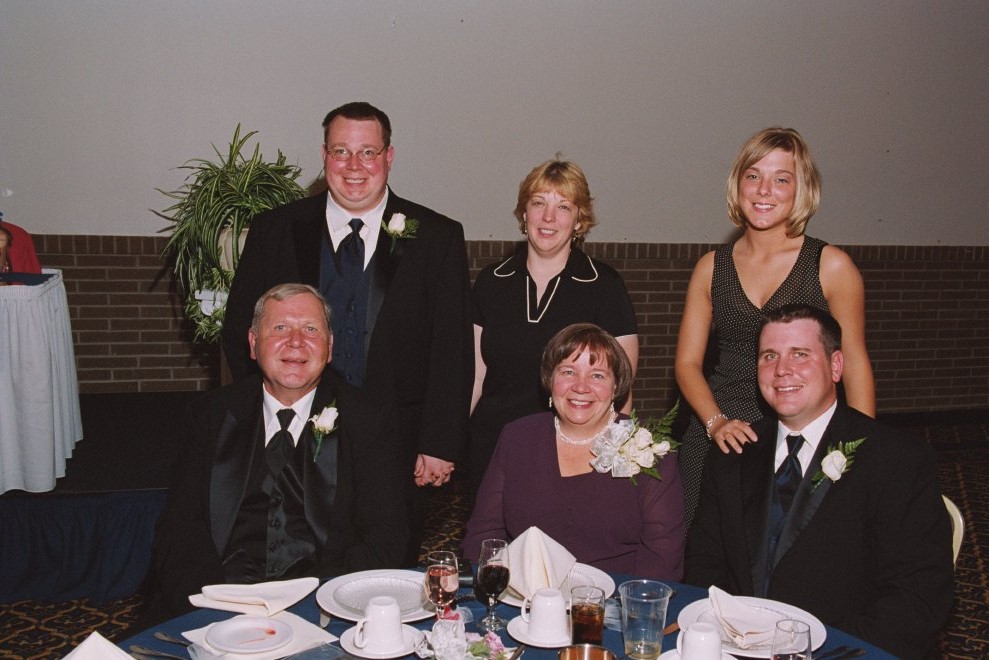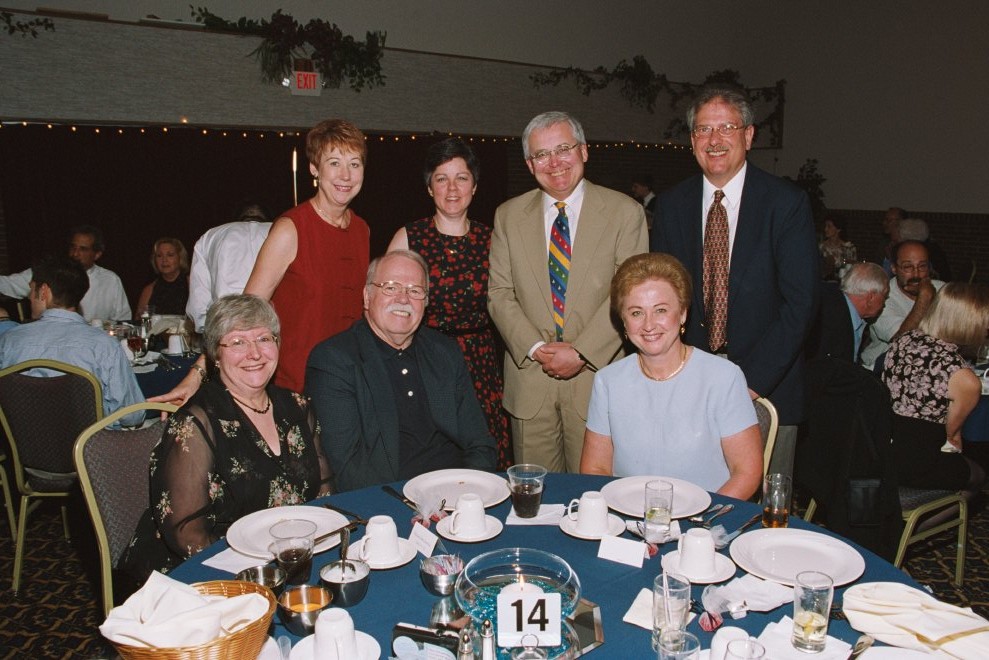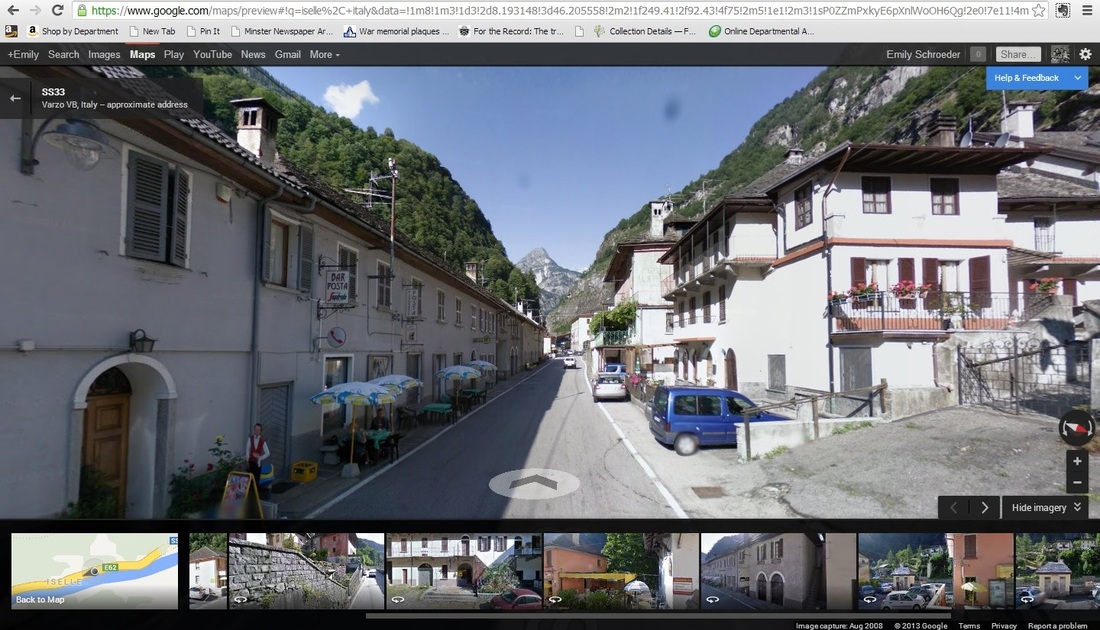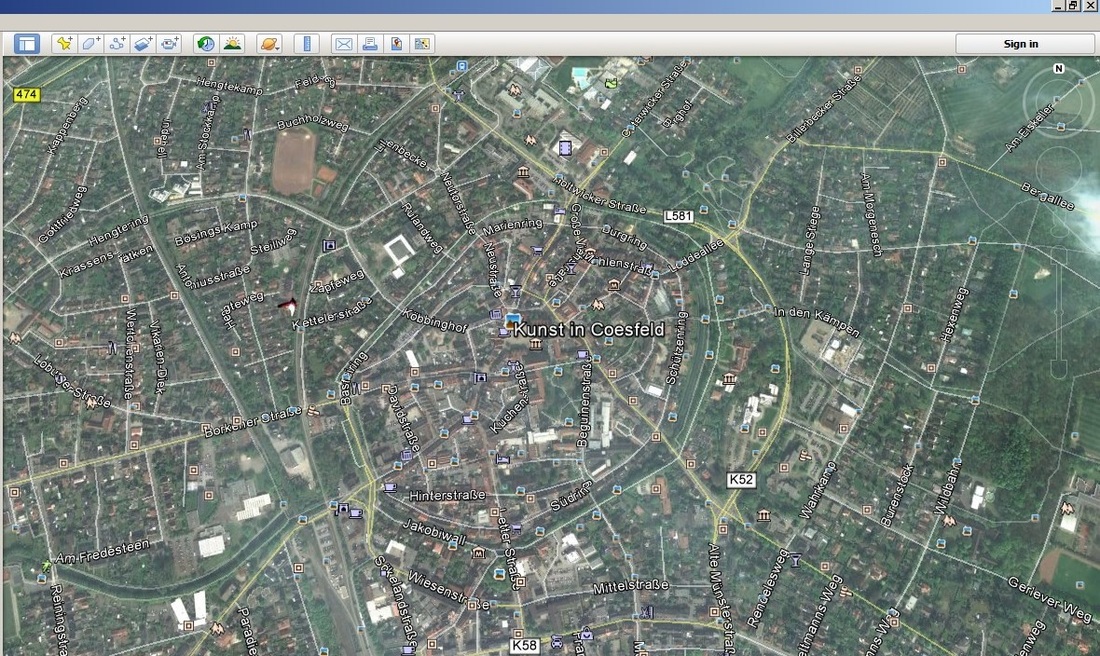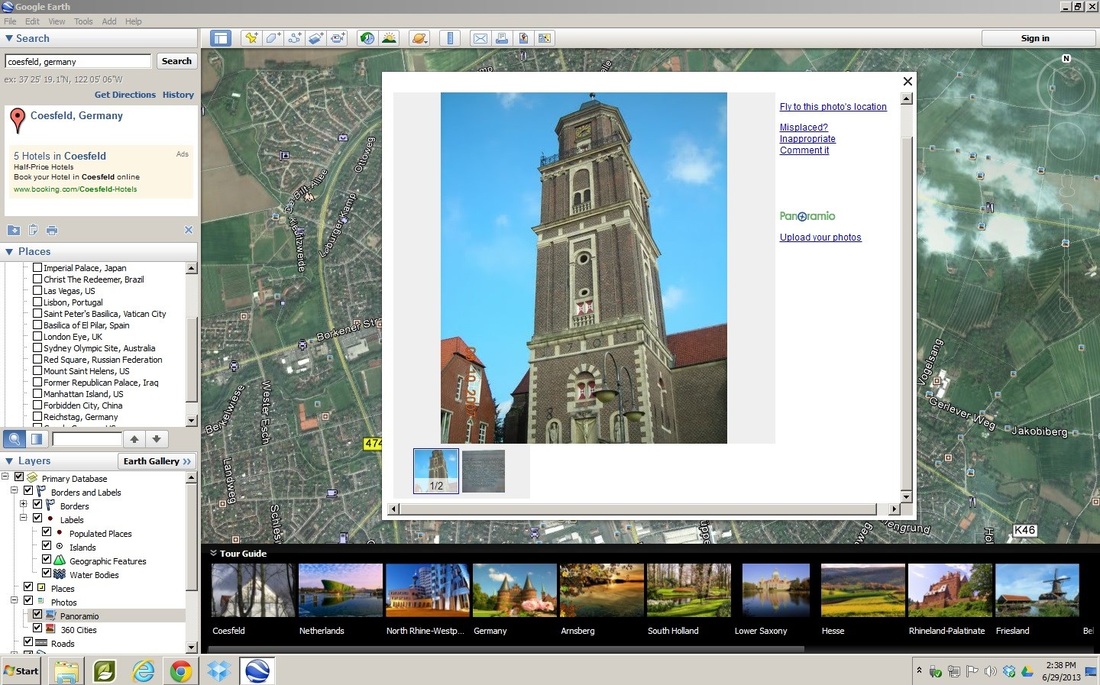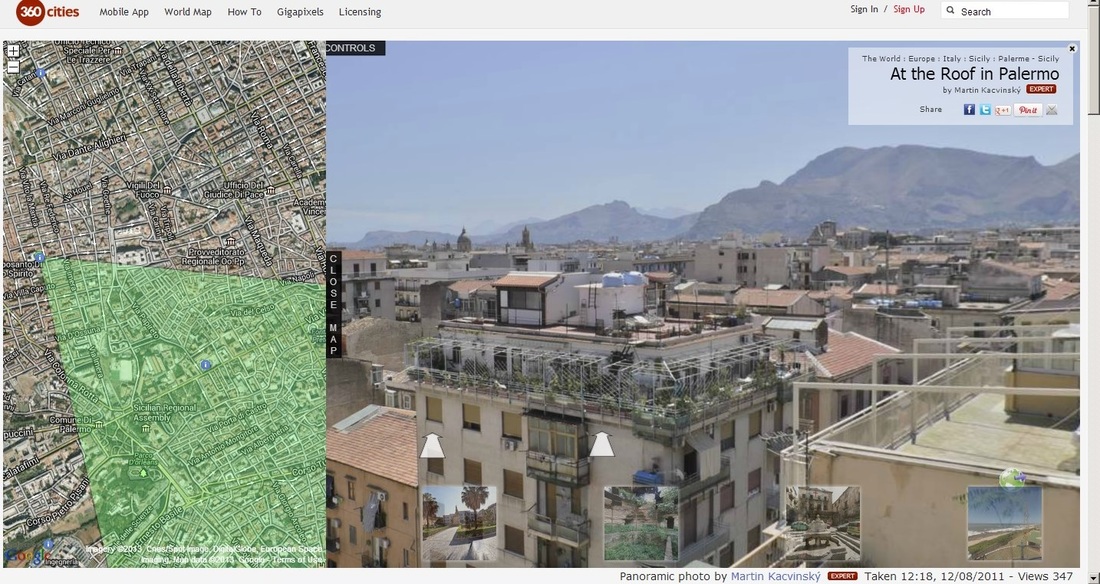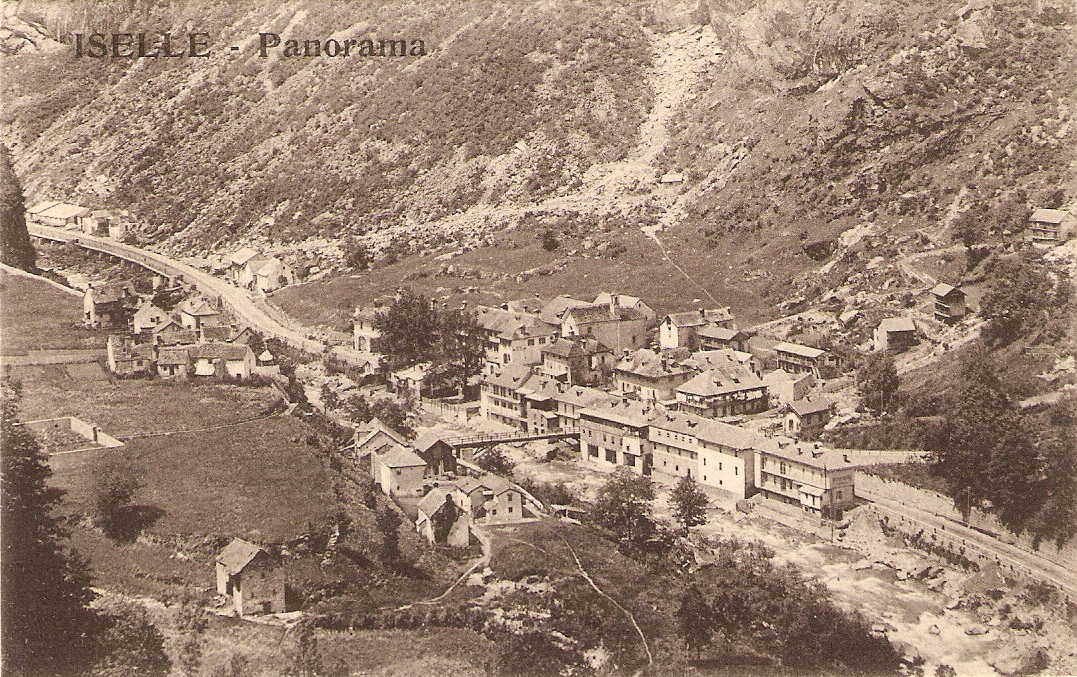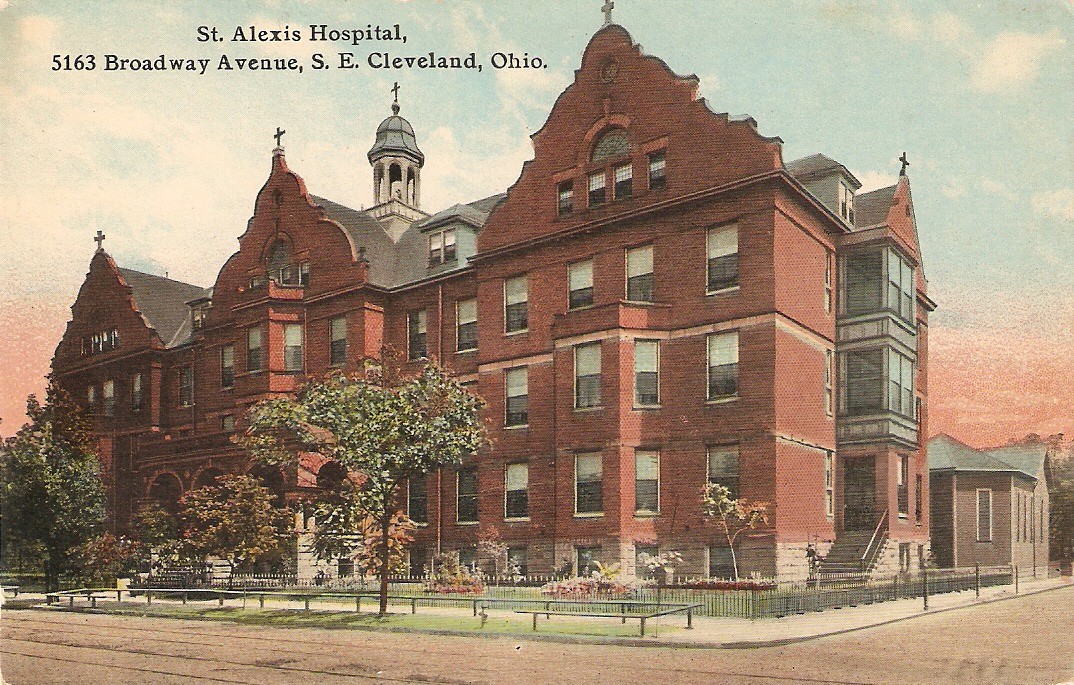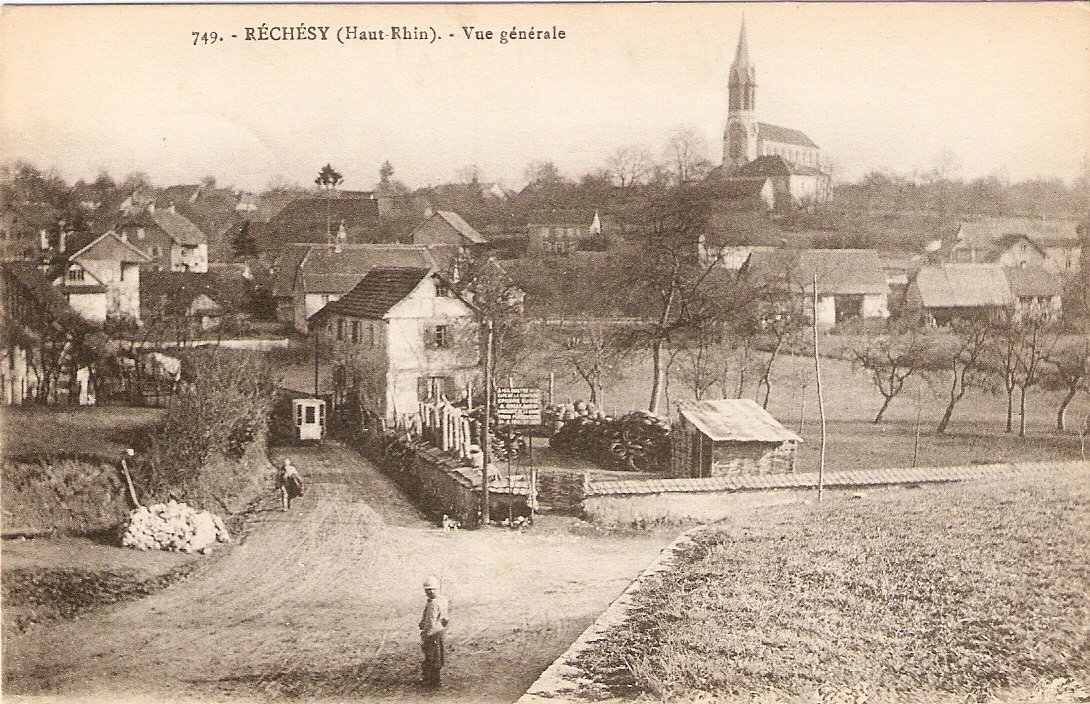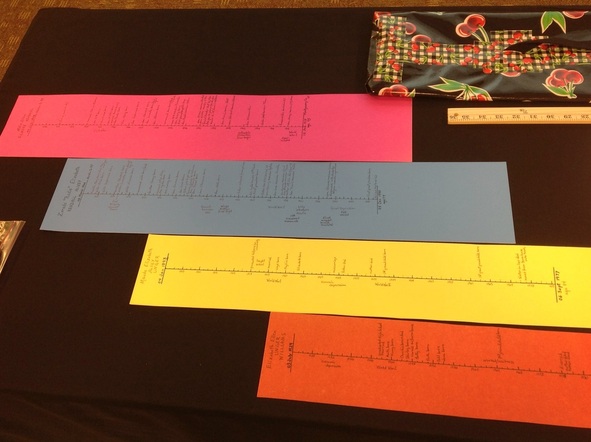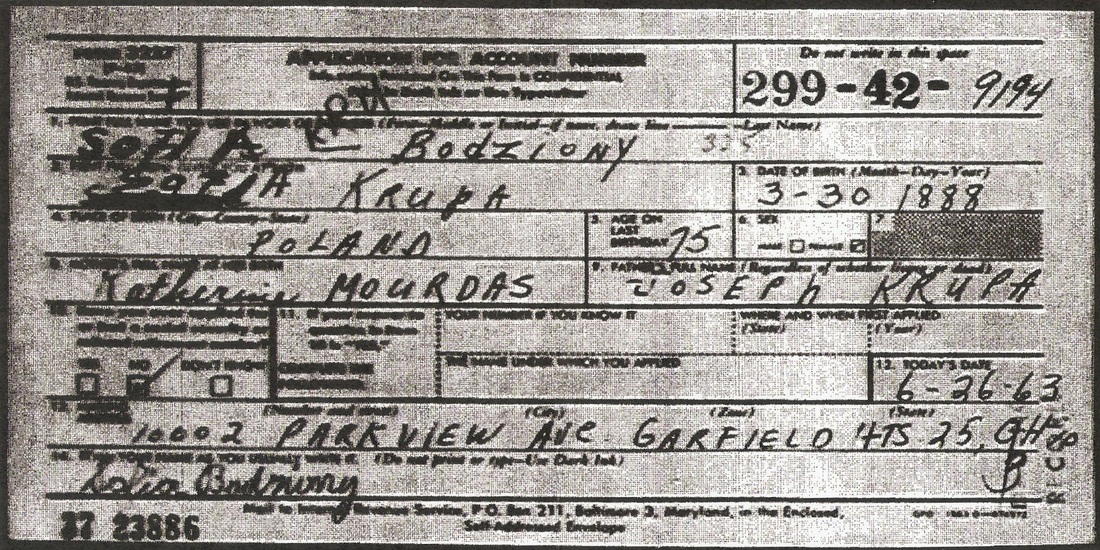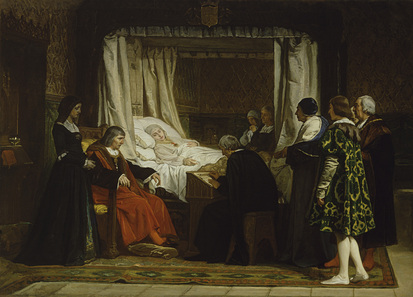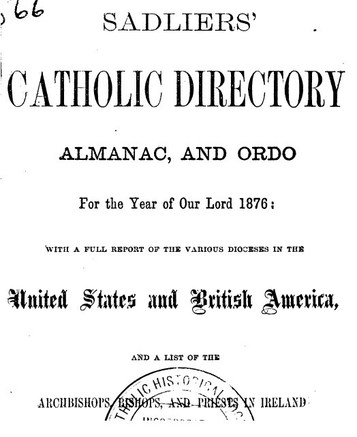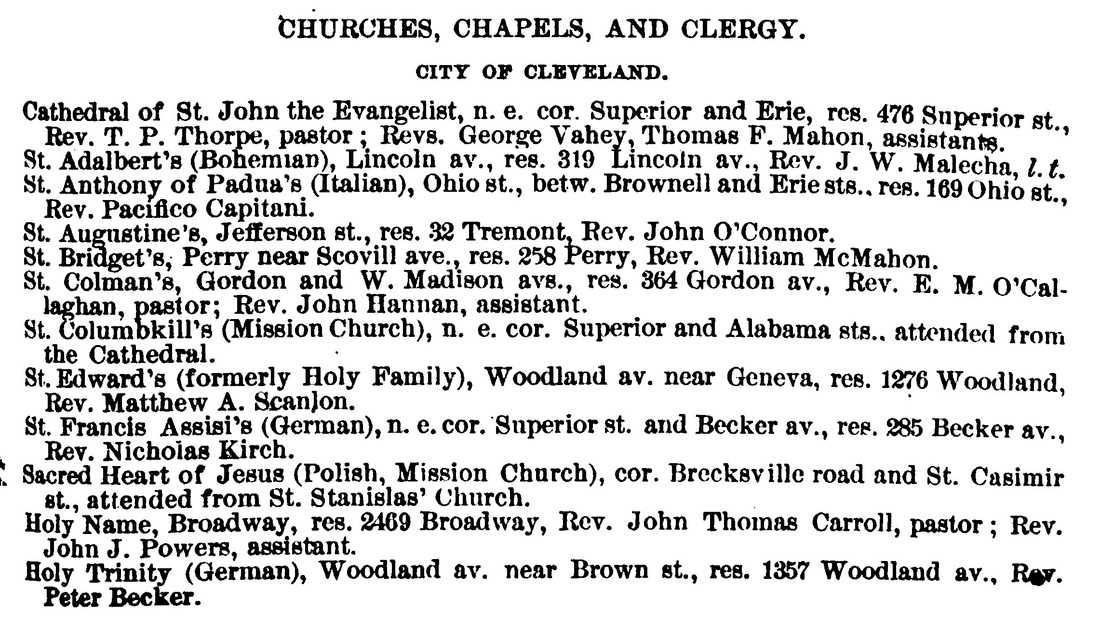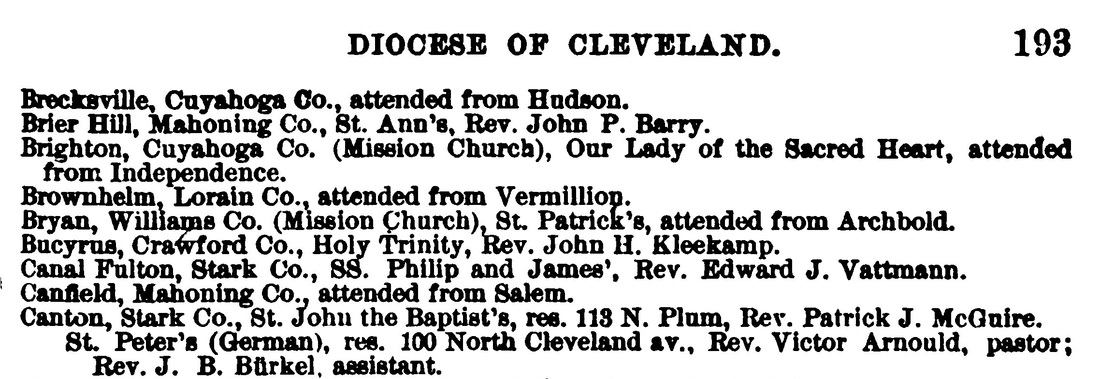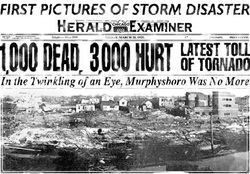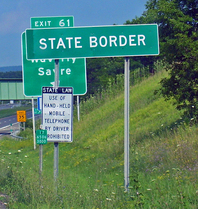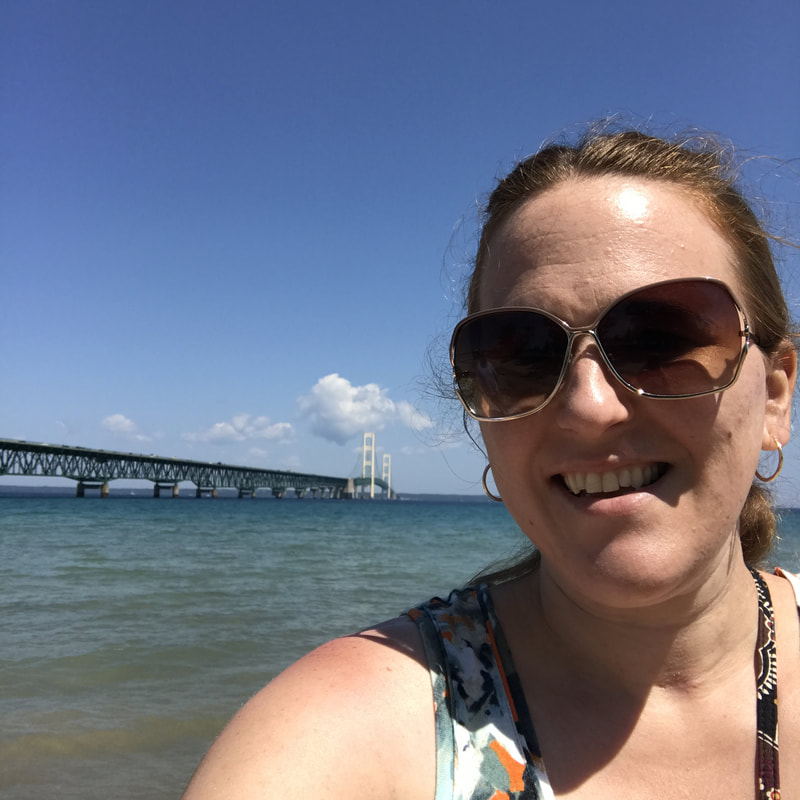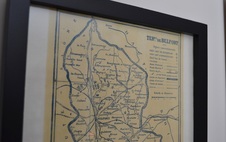
As I mentioned in my April post, I started buying maps and postcards off of websites like as eBay and Etsy. I also found a couple of books and small pieces of artwork that help to tell our family's story. (Tip: Don't limit yourself to U.S. sellers only; I found many unique postcards and maps through international sellers.) Once I felt that I had a good representation of the various branches of our family tree, I looked into ways in which I could frame these items. I visited a local custom framing shop in town. Let's just say that their prices were WAY out of my budget. My heart sank; I thought my project was over. I started looking around online and found an Ohio-based company called American Frame. Their easy-to-use website takes you step-by-step through the process of measuring and ordering custom mats and frames. Oh, and did I mention that their frames and mats were affordable? My project was back on track!
Here are some of the custom frames I ordered from American Frame. The photos do not do them justice, and there is some glare from the camera and nearby window. When choosing frames for each individual piece, I decided to go with a frame/mat that matched that ONE piece of artwork. In other words, I didn't try to "match" frames with each other, which the 'designer' at the custom framing shop was pushing me to do. I love the variety that resulted, and, as you'll see later, I think it gives the display as a whole a lot of personality. (Click on image for larger view.)
Here is a photo of the entire display. Many thanks to my husband for hanging the shelves. I did not originally intend for the old sewing machine to become part of the display, but it works, especially since two of my great-grandmothers were pretty good seamstresses. I actually think it would be cool to add a few smaller items to represent some of the occupations of some of our ancestors - maybe a plumbing pipe/valve for my grandpa, and a small blacksmith tool and toy tractor for my husband's ancestors.
Feel free to ask me any questions about the process of creating a genealogy history wall. I'd be happy to talk about it!
©2013, copyright Emily Kowalski Schroeder
